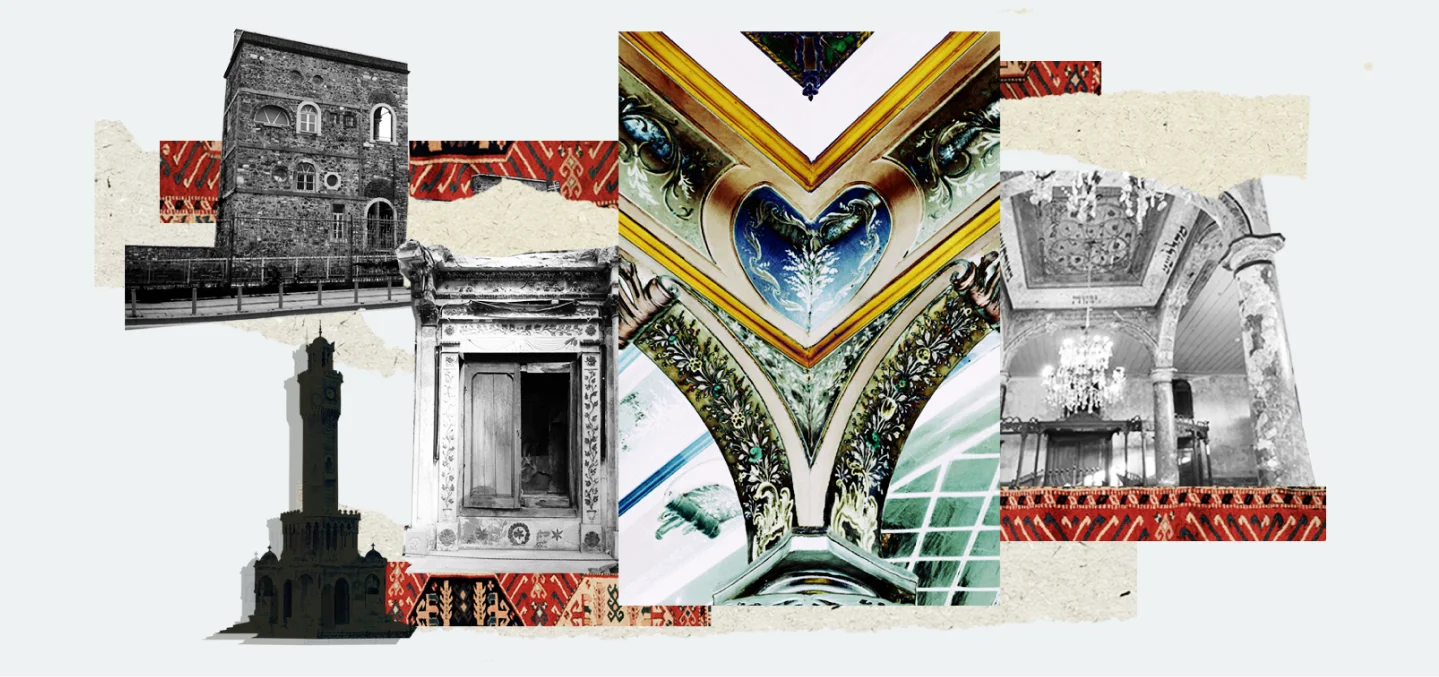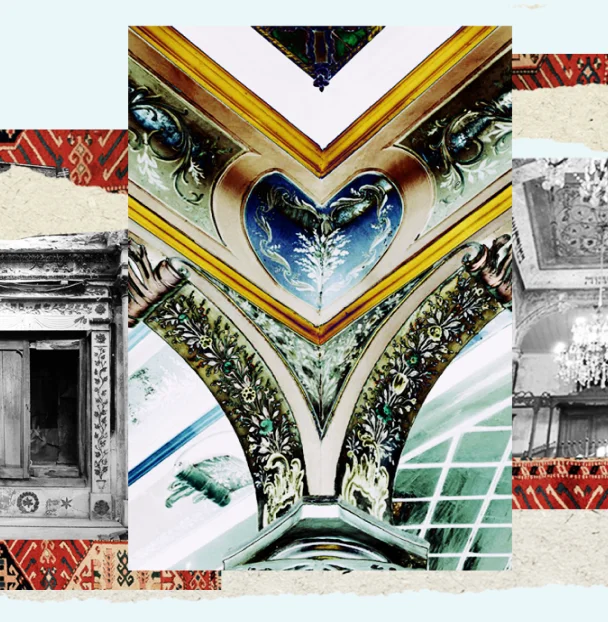Izmir, a port city on Turkey’s Aegean coast, exhibits a unique character of Sephardic tradition and heritage. Magnificent synagogues, built during the zenith of the Ottoman Empire, remain within the city’s old Jewish Quarter as living testimonies to one of the most spectacular juderías of its kind.
In the 17th and 18th centuries, Izmir’s Jewish community arguably had the most spiritual and cultural influence among all Sephardic diaspora communities. The Jewish population, which almost always amounted to about 10% of the general population and peaked at tens of thousands of people, diminished starting in the 1920s, primarily due to harsh economic conditions. Jewish citizens of Izmir began immigrating to the Americas, and the outward migration continued mid-century with the establishment of Israel as the world’s Jewish state.
The Izmir Jewish Heritage Project, led by the Izmir Jewish Community Foundation, aims to preserve the city’s old Jewish Quarter, reviving as many cultural elements as possible. The project gradually is forming an Izmir Jewish Heritage Quarter through conservation of the district’s historic synagogues. Nine synagogues constructed in typical Sephardic architectural style are enclosed in the old Jewish Quarter, each telling its own story. Walking from one synagogue to another, visitors are absorbed into an authentic journey that brings alive a fascinating era of our diasporic past.
Preserving our heritage is a considerably new phenomenon within Izmir’s Jewish community, which had preferred to keep a low profile as means of self-protection. As historic preservation works develop, we routinely hear expressions of pride among Izmir’s Jewish community members. I believe that Jewish heritage work must be at the front of the line in order to secure self-respect and recognition of our cultural values. This allows the rest of Izmir society to be aware of us, and promotes intercultural dialogue. It also might bring about conversations that break stereotypes and pre-judgments. In this way, our heritage work is a form of fighting antisemitism.
Now, I invite you to join me on a visual tour of Izmir’s old Jewish Quarter.
Starting from the main street of the old quarter, we encounter Izmir Jewish history at every corner. At Bikur Holim Synagogue, we come upon an entry door that does not look promising at all. But as soon as we pass through the second door, we can sense something special ahead. Beyond the midrash, we discover the main praying hall and are stunned by the contrast between the ordinary gate behind us and the extraordinary interiors we now observe.
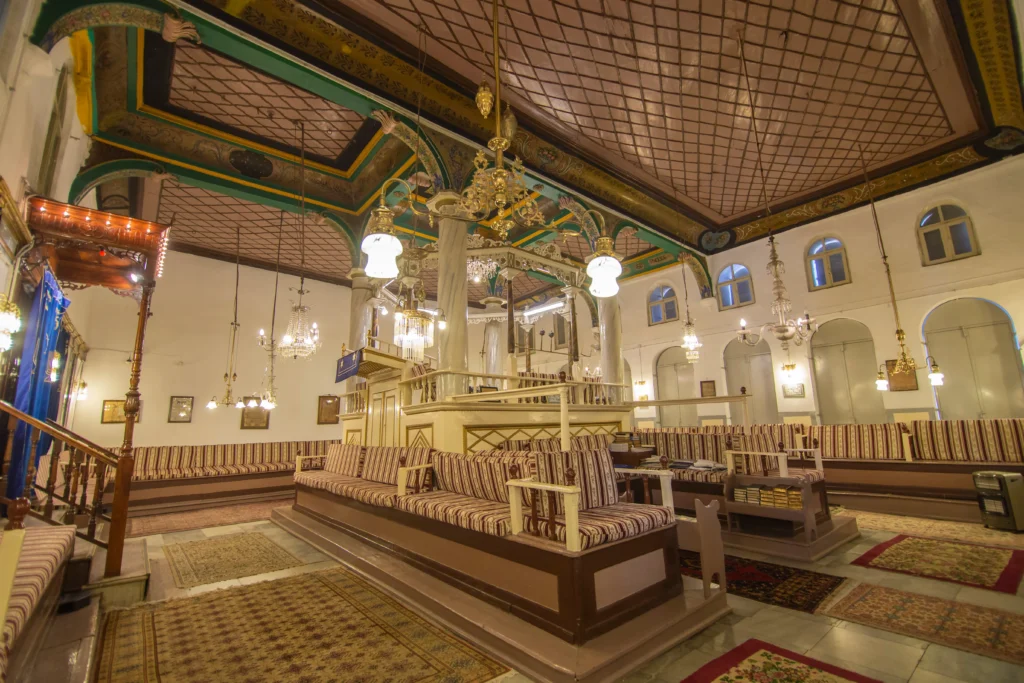
Built in 1724 by Salomon de Ciaves, a Portuguese Jew who also gave his name to the nearby district, Bikur Holim is a shining example of Izmir’s Sephardic synagogues as well as the Jewish presence in the city. It embraces you immediately with the warmth diffused by the simple seating that allows for close human touch and the divine nature of the imposing and impressive high tevah, which characteristically has been placed in the center of the sanctuary.
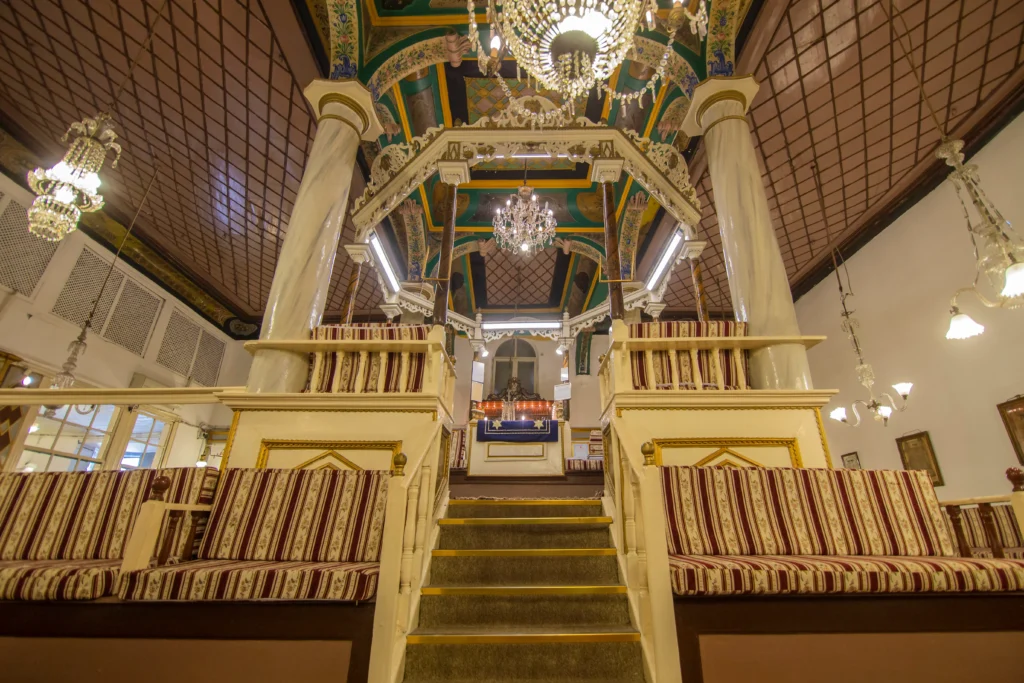
Bikur Holim, meaning “visiting the sick” in Hebrew, is the name given to the synagogue as the basement probably was used as a hospital during plague or cholera epidemics that were common before the 20th century.
As we leave Bikur Holim and walk toward the southern section of the Jewish Quarter, at a distance of a couple hundred meters, we arrive at a historic junction. On one side, we can contemplate the House of Shabbatai Tzevi, who had declared himself in 1648 as the “Messiah of the Jews.” On the other side, we see the famous Portugal Synagogue.
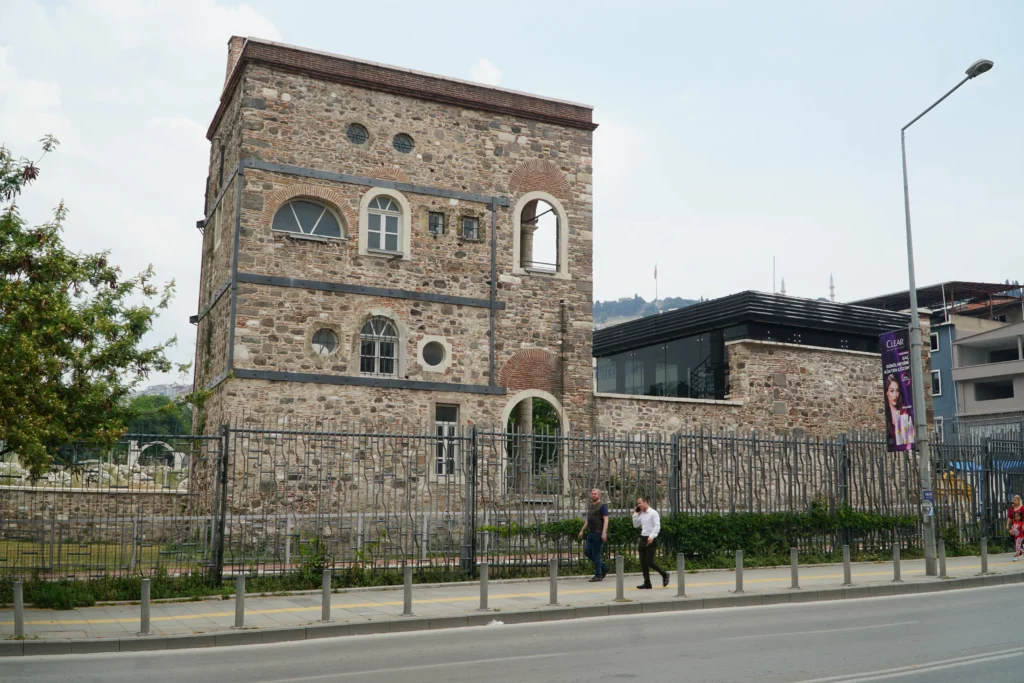
Here, we can imagine one morning in the autumn of 1665, when Shabbatai Tzevi and his followers marched together to Portugal Synagogue, chanting and dancing. They wished to participate in Shabbat prayer, but the rabbis in the synagogue refused their entrance.
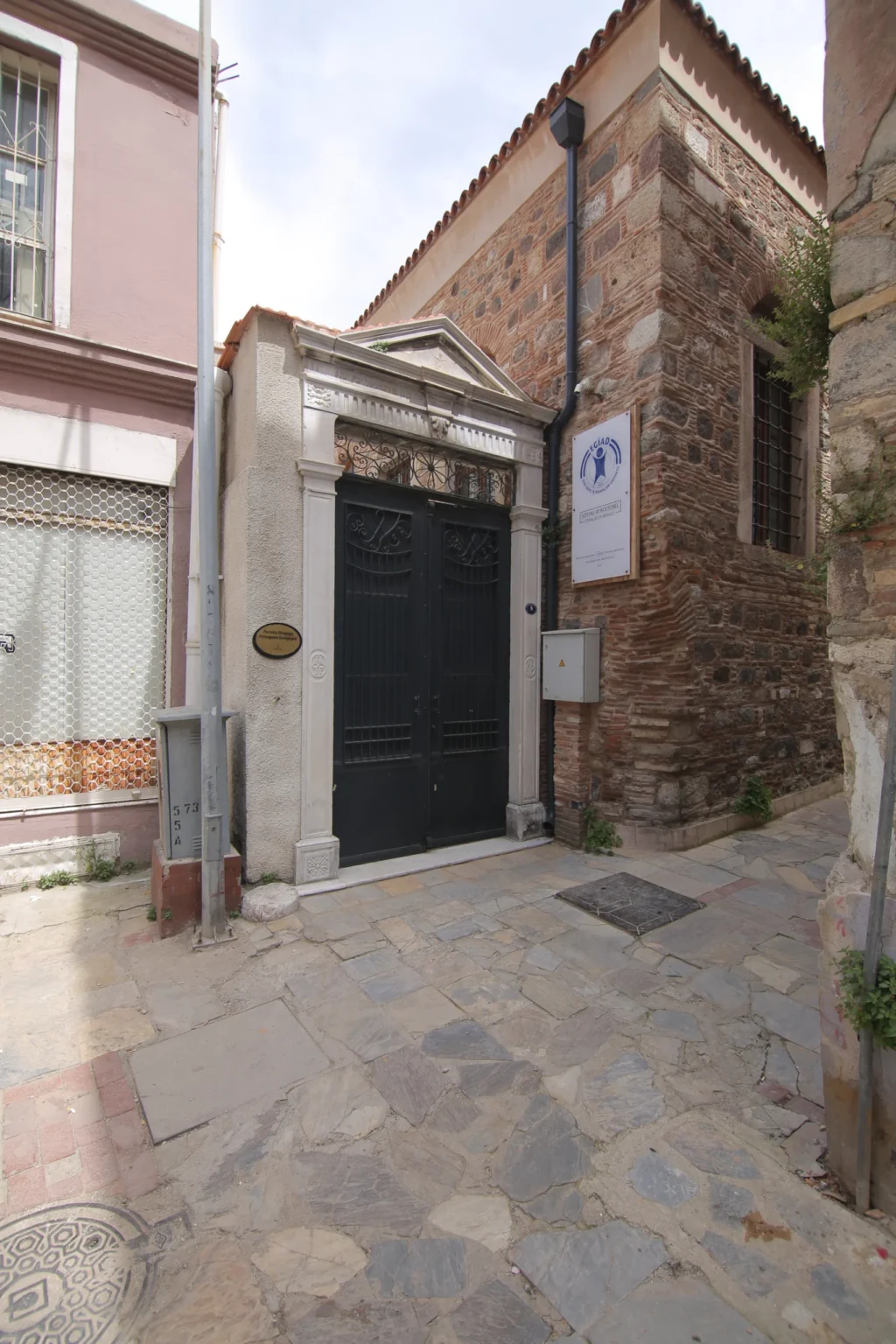
The miscontent of the crowd built into an uncontrollable anger and the gate of the Portugal Synagogue was broken with an axe, allowing Shabbatai and his followers to take control of it, turning the synagogue into a symbol of the short-lived dominance of Shabbatai in Izmir and the split (and discussion) it brought about in local Judaism circles.
Portugal Synagogue was badly burned in a 1976 fire but was restored in 2018 and now is functioning as a venue for social and cultural events.
Walking toward what once was officially registered as Chief Rabbi Street, we find ourselves once again feeling the density of Jewish history in the city. To the left, we see the Chief Rabbinate Building, the heart of Izmir’s Jewish community from 1841, its beautiful garden surrounded by a wall of the building, which unfortunately is in a very bad state and begging to be restored. In front of the house, we remember the old Jewish Hospital building, which no longer exists.
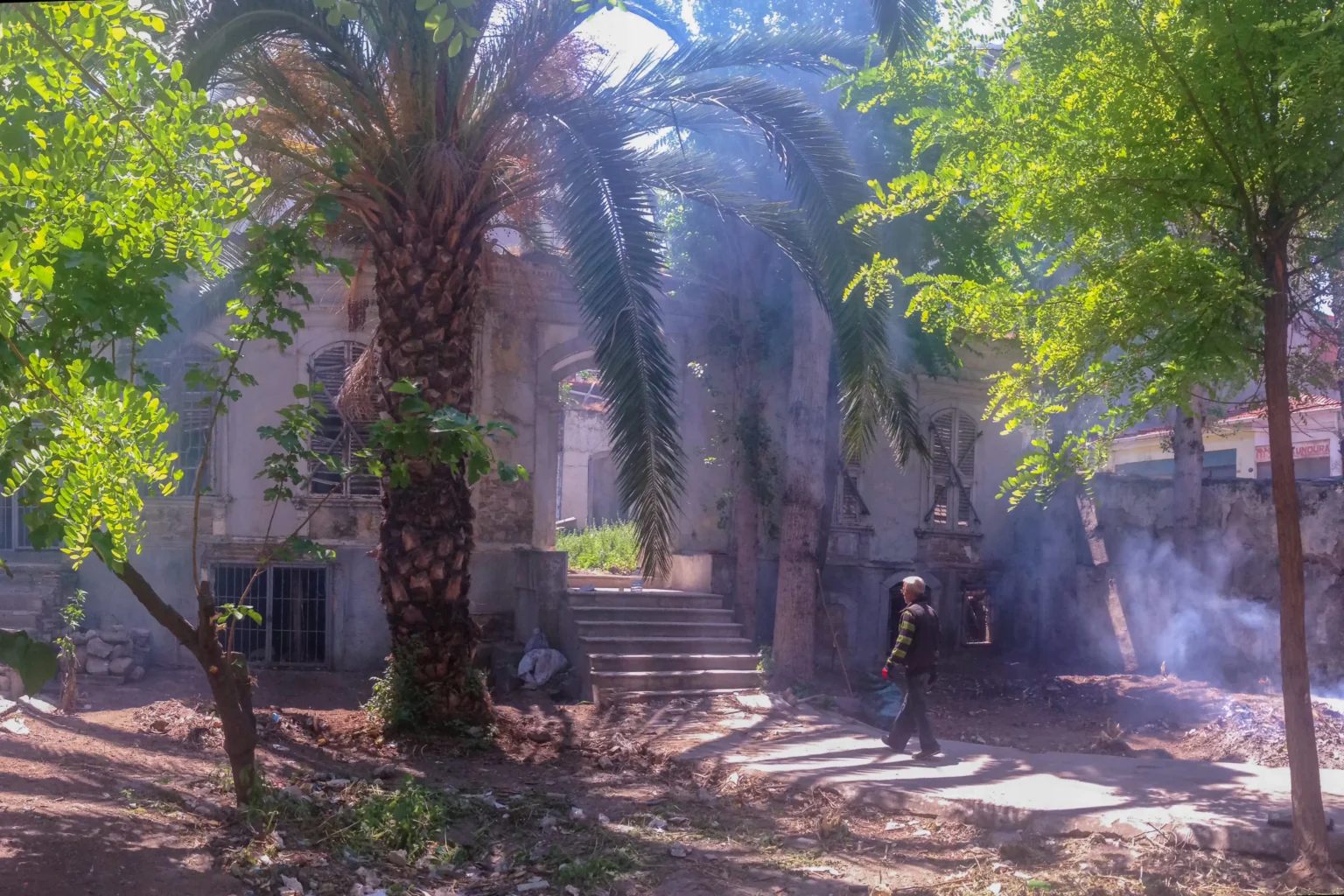
A minute’s walk brings us to Beit Hillel Synagogue. This synagogue collapsed in 1990 and was restored in 2014.
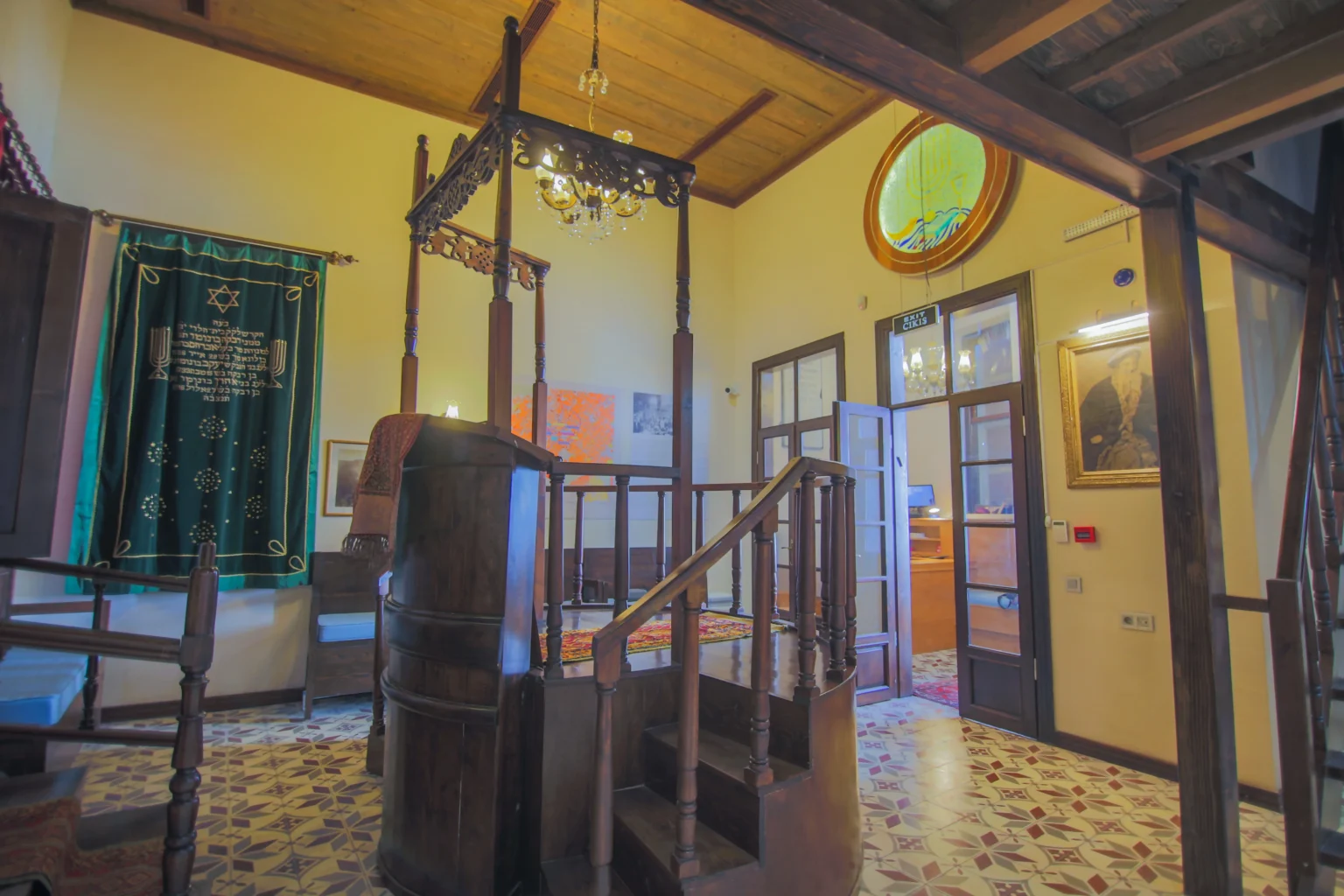
We imagine the great chief rabbi of Izmir, Hayim Palachi, in his youth entering the building, which once was a yeshiva. His son, Avraham Palachi, converted the yeshiva into a synagogue and named it after the Romanian philanthropist who sponsored the printing of many of his father’s 72 books. We can continue to imagine Hayim Palachi walking to his house, which is next door to Beit Hillel, and from there, visiting the hospital or entering the Chief Rabbinate Building to take care of the community’s needs.
We move onto Bohor Levi Street, named for a well-connected Jew who became famous as an astronomer (which also meant being a fortune teller), a magician and a popular healer. From there, we immerse ourselves in the vivid atmosphere of the Synagogues Street Market.
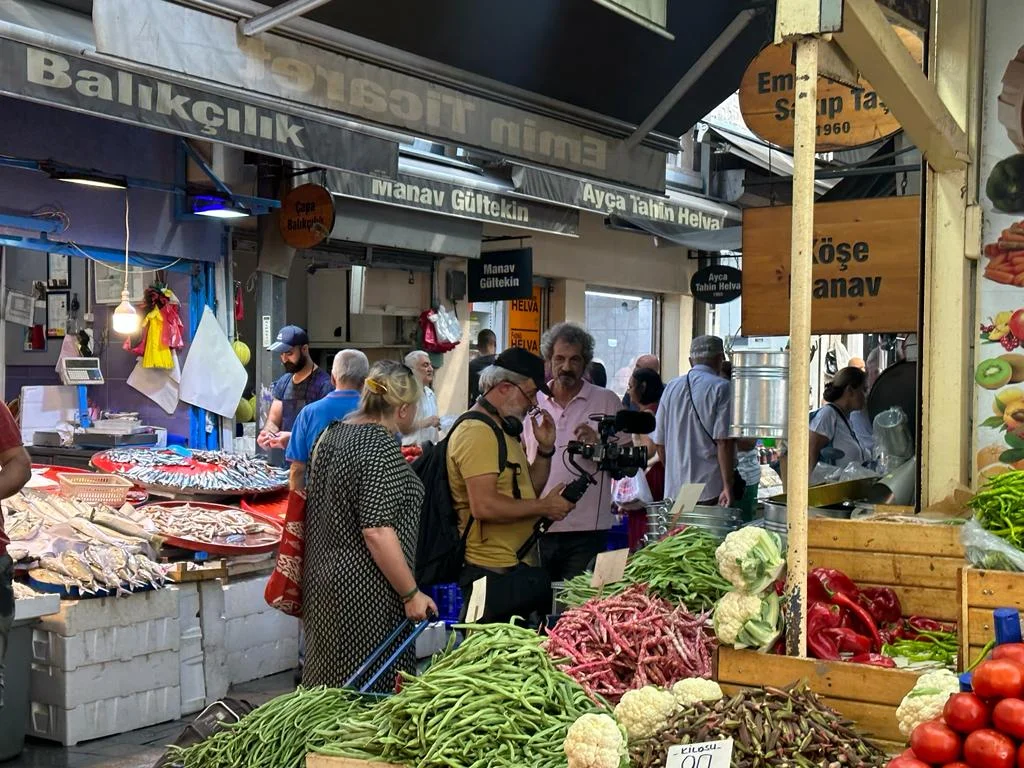
Ladino was the main language spoken at this market, which was populated by Jewish shop owners, vendors, tavernas, and Izmir’s main kasher wine factory. Presently, due to the fact that no Jews live in the area anymore, the market now is populated mainly by merchants from all over Turkey who settled in the city.
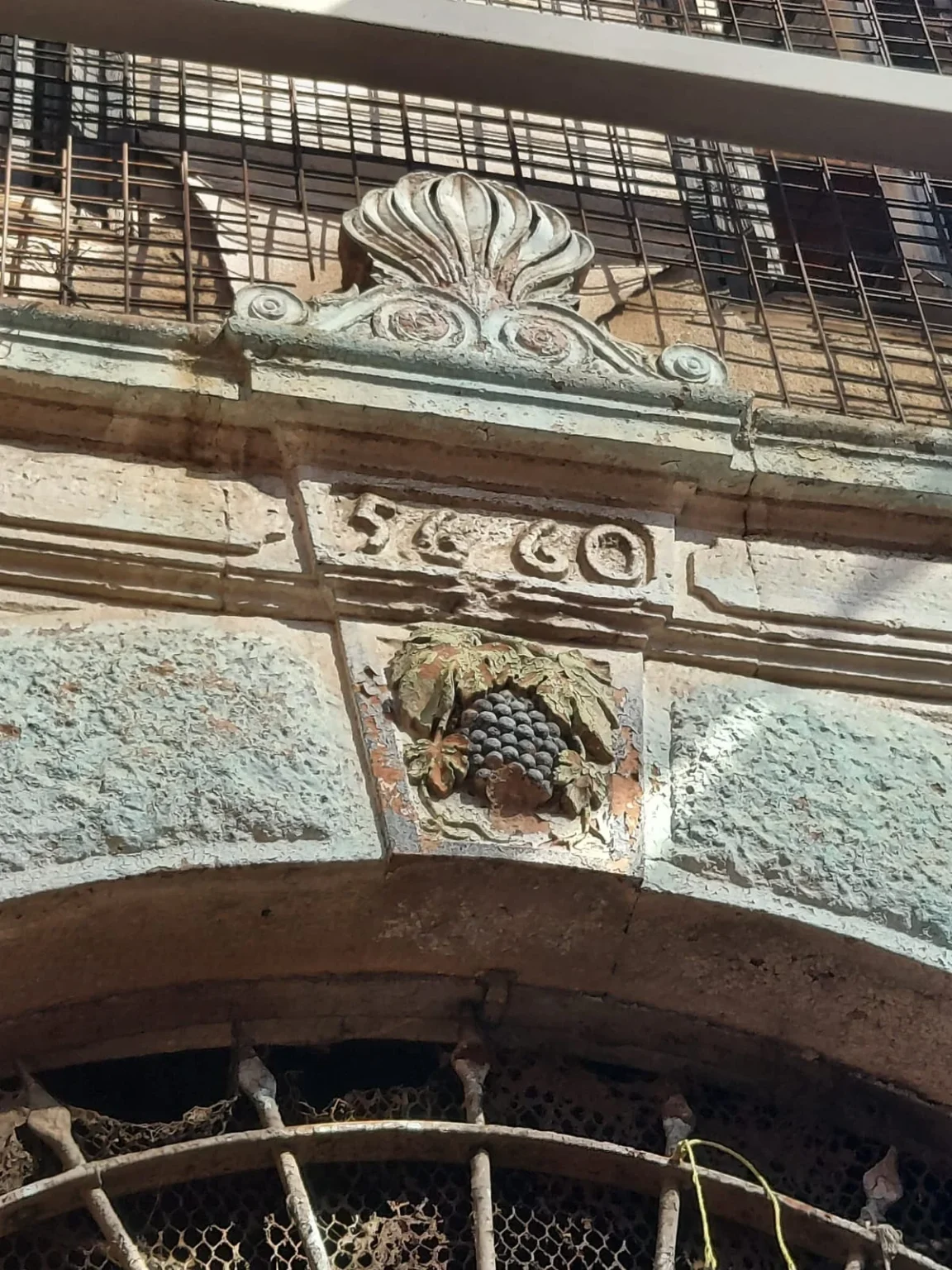
As we traverse through the market and leave the noise produced by the crowd, we now are on what once was called Little Synagogues Street, named after the six synagogues that survived through the centuries and still stand as Jewish monuments witnessing the glorious past of the community. We imagine the sounds of Hebrew and Ladino hymns coming from two of them, Etz Hayim Synagogue and Talmud Tora Synagogue.
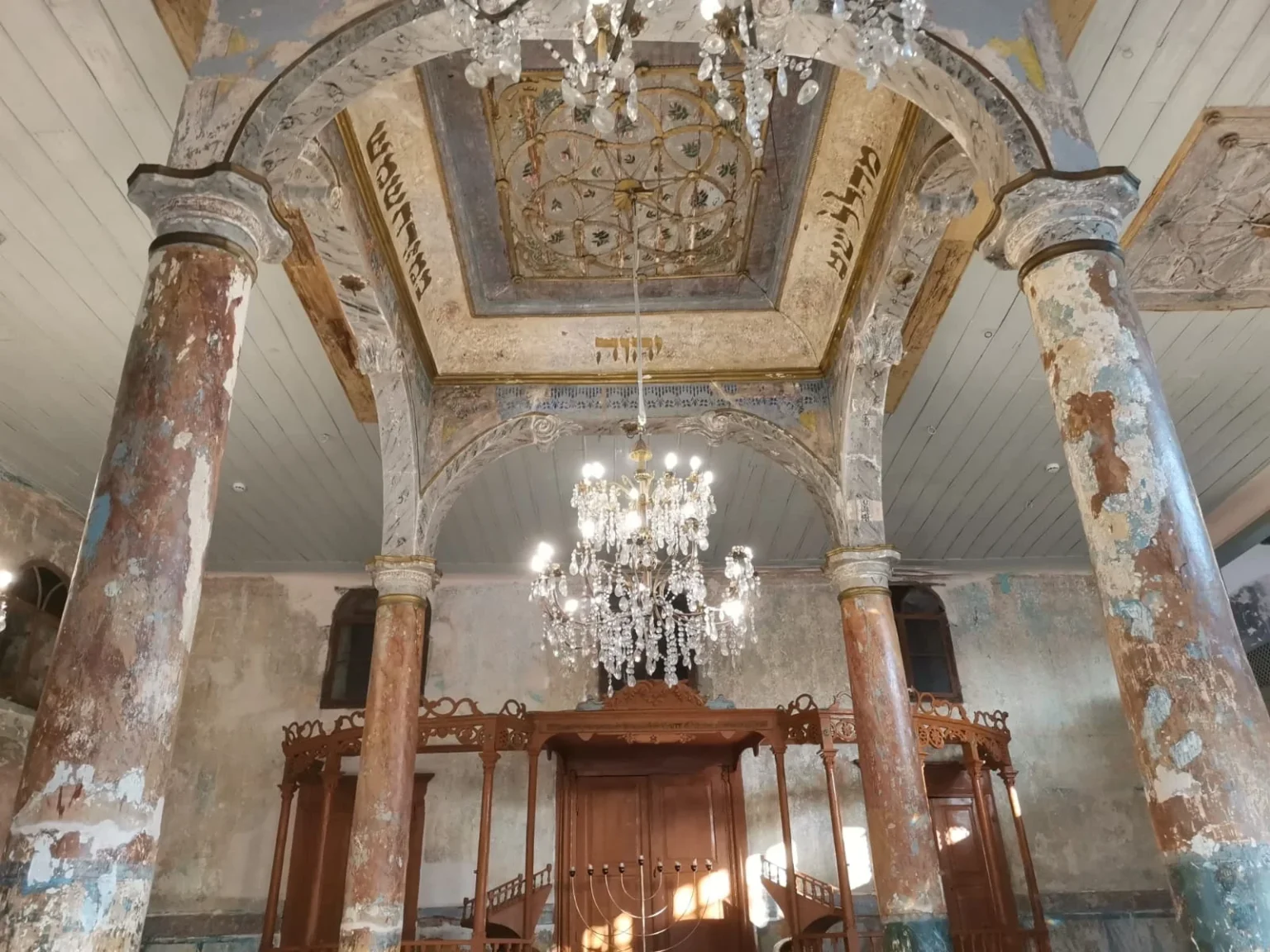
Etz Hayim, believed by some to have existed since Byzantine times, was rescued from collapse in 2015 and recently underwent a thorough conservation that made its historic layers visible. At present, the conserved synagogue’s basement functions as an exhibition space, with the main hall hosting cultural events and artistic performances that celebrate Sephardic culture.
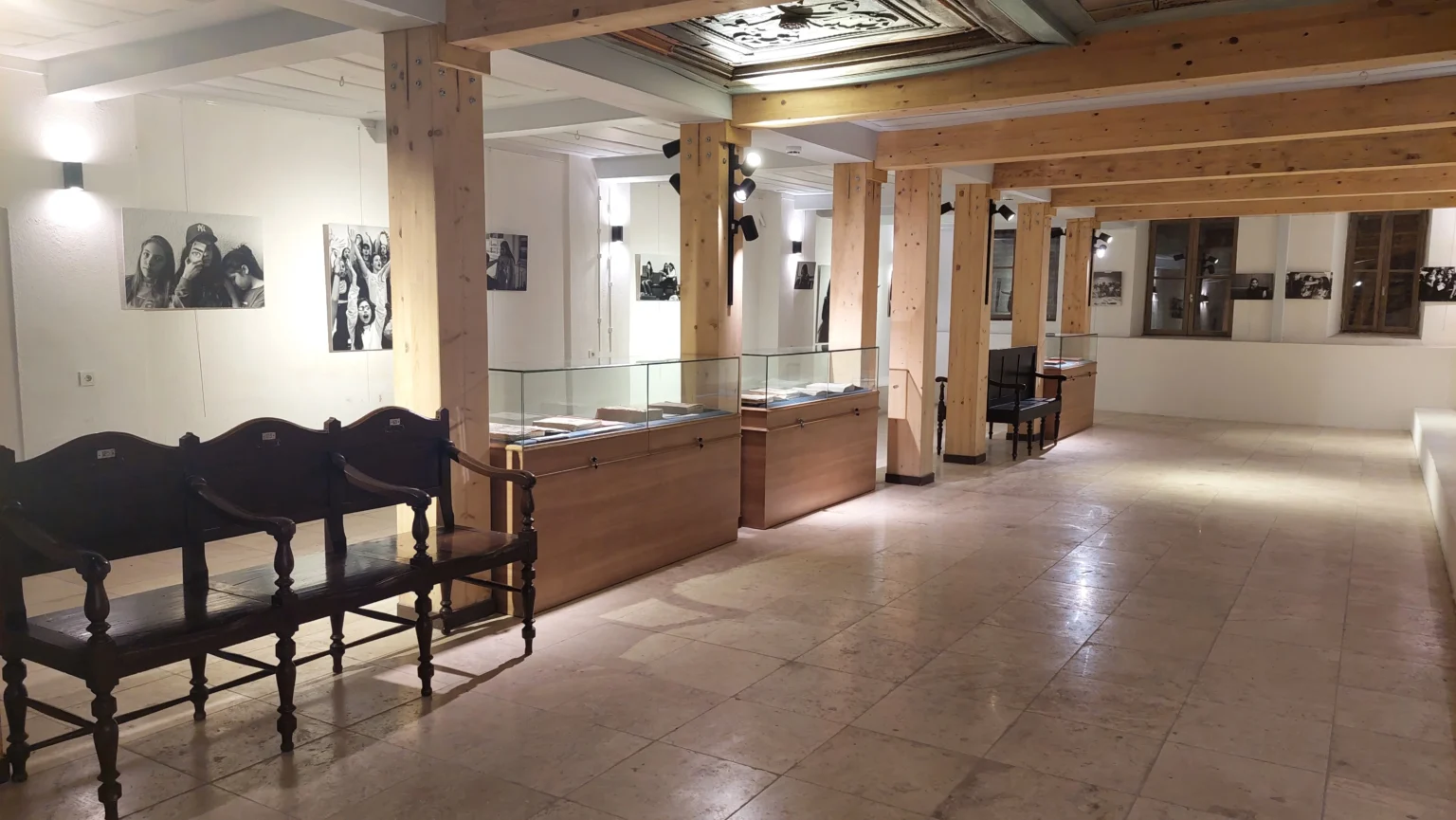
As we step out from Etz Hayim, we face Talmud Tora Synagogue on the left and the old Jewish School on the right. Built in the 1800s, Talmud Tora’s roof collapsed in 1999, making its walls unstable. It underwent a rescue work in 2021 and currently is protected with a temporary roof while the walls are being strengthened. Izmir’s Regional Council of Preservation approved restoration plans for the synagogue in December 2023.
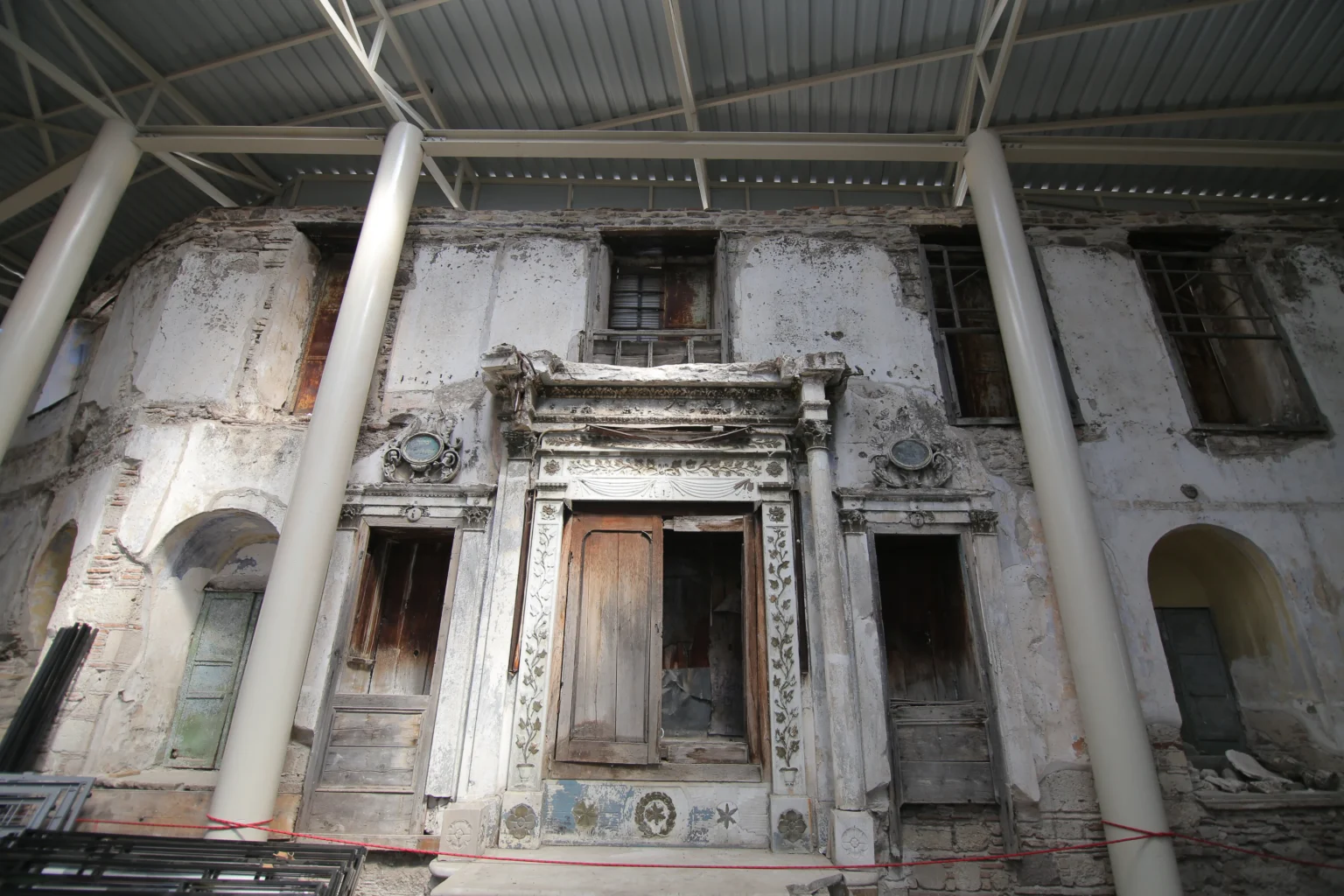
Talmud Tora operated a large yeshiva, located on the ground floor of the opposite building, adjacent to Etz Hayim. This entire area once was full of children who filled the classrooms of the school and adults on their way to tefilla in the synagogues of the Jewish Quarter. Talmud Tora was where “Shabbat Halbasha,” an old Sephardic custom, and the annual Purim festival were held.
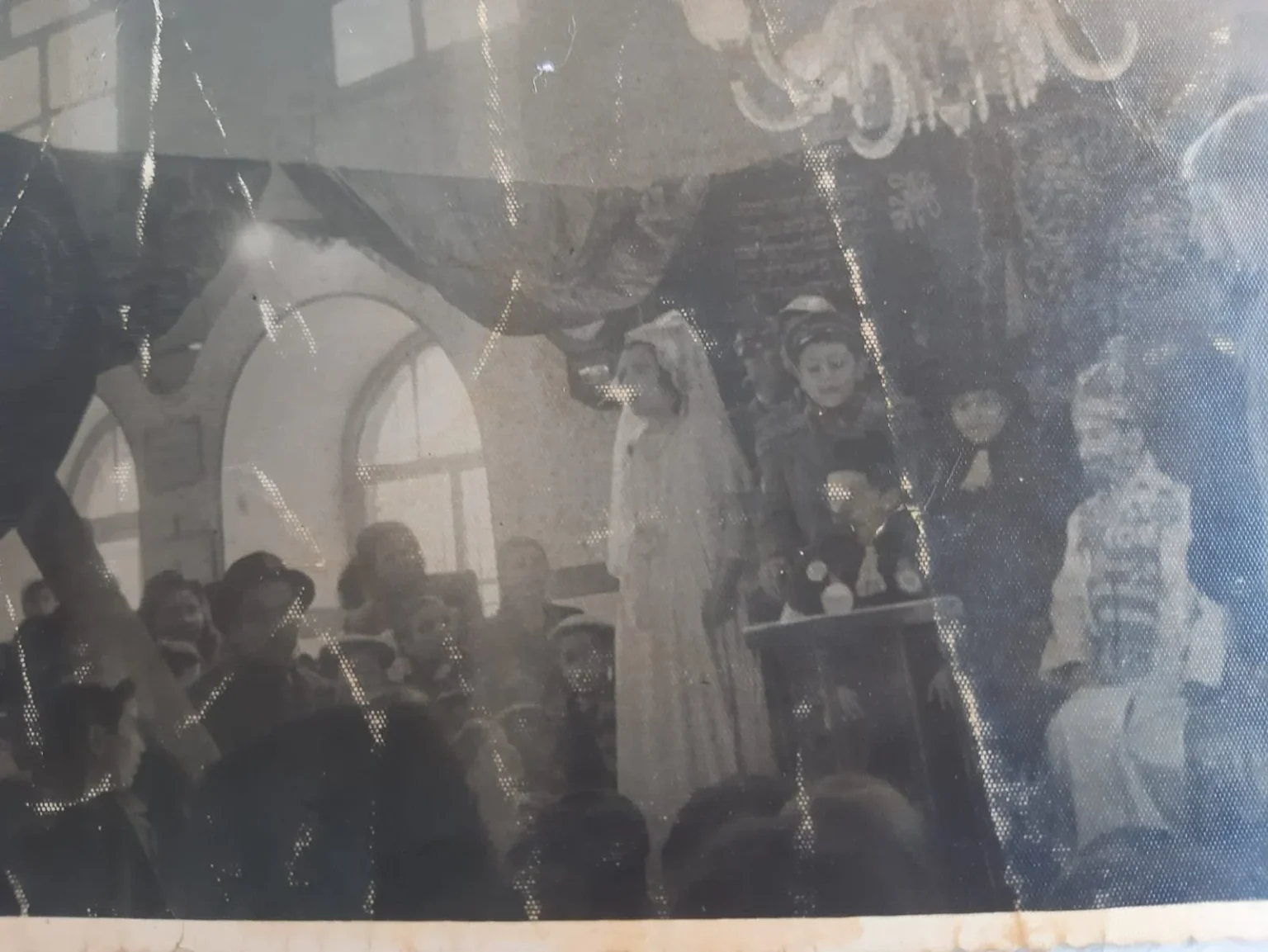
To pay respect to the once vibrant synagogue, the yearly Izmir Sephardic Culture Festival events take place against the backdrop of Talmud Tora.
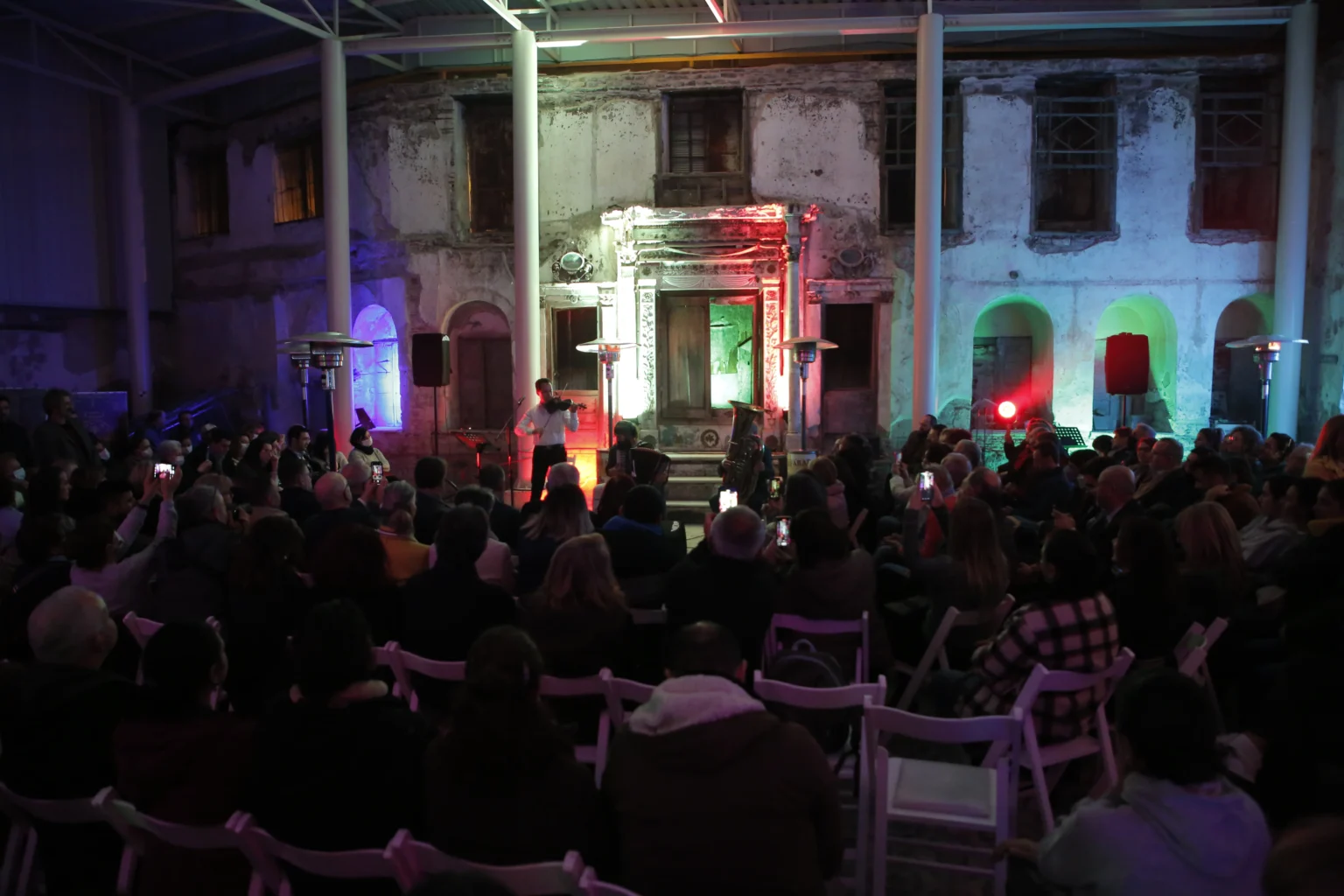
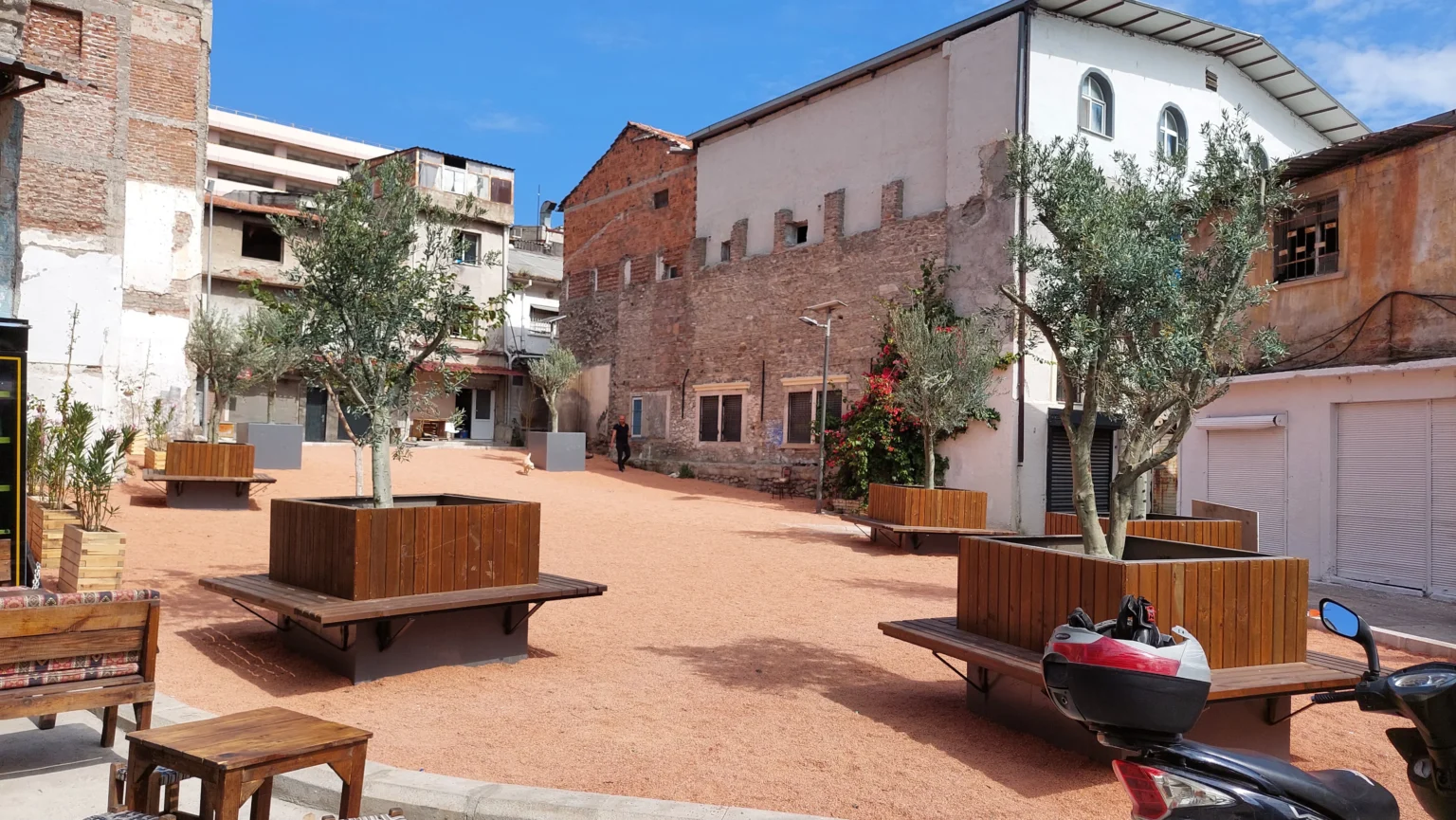
Synagogues Square is situated between the Talmud Tora, Shalom and Algazi Synagogues. This square very recently has been established and formally registered with this name. This is an important achievement as this is the first time in 100 years that a public place in Izmir has been named for its Jewish attribute.
Walking through the square, we arrive at Shalom Synagogue, opened in 1620. The first chief rabbi after Sephardic Jews settled in Izmir, Joseph Escapa, frequented this synagogue very often and it is very probable that the young Shabbatai Tzevi, who was Rabbi Escapa’s pupil, studied in this synagogue. This is the only synagogue not harmed by the great fire of 1840 that devastated the Jewish Quarter. Religious services are held in this synagogue.
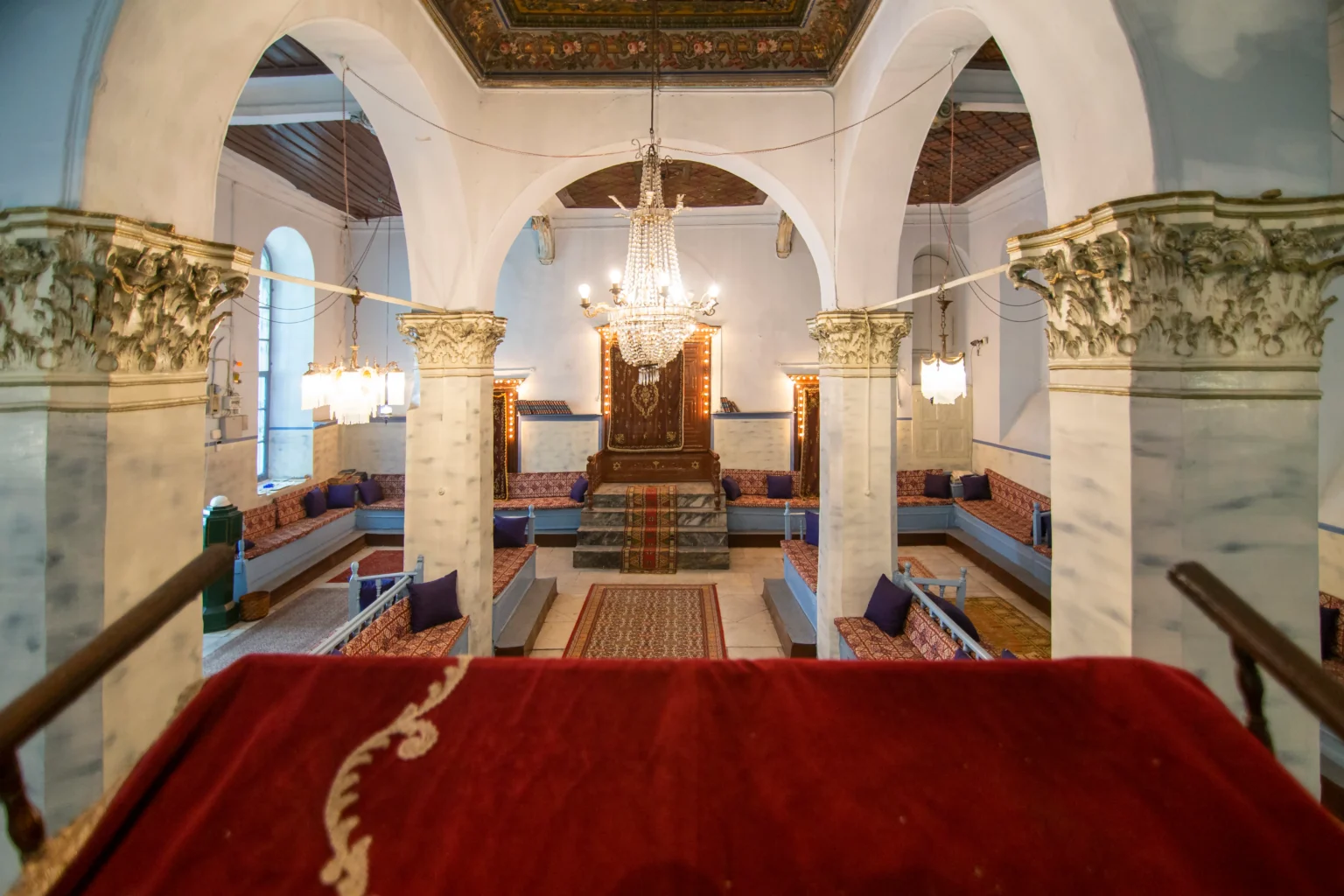
A narrow street separates Shalom and Algazi Synagogues. With their windows facing each other, the voices of the hazzans and the prayers of the congregations can mix together.
Algazi Synagogue was built by the renowned Algazi family, which raised rabbis, hazzans and musicians throughout generations. Although an inscription on the wall of the courtyard reads 1724, some sources indicate that this was a synagogue that Shabbatai Tzevi used to visit, in which case the synagogue must have been built before 1666. Like Shalom Synagogue, religious services are held regularly at Algazi.
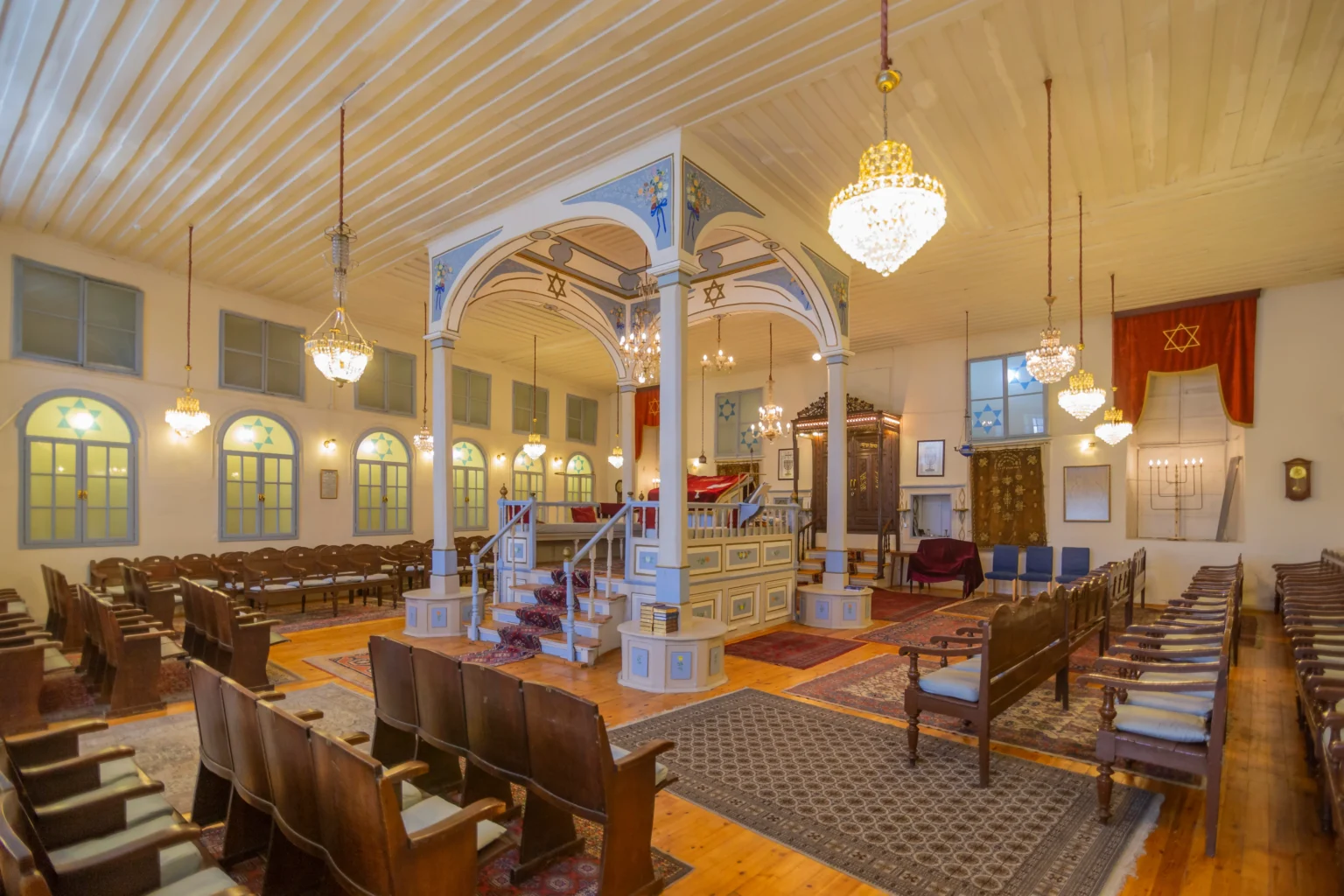
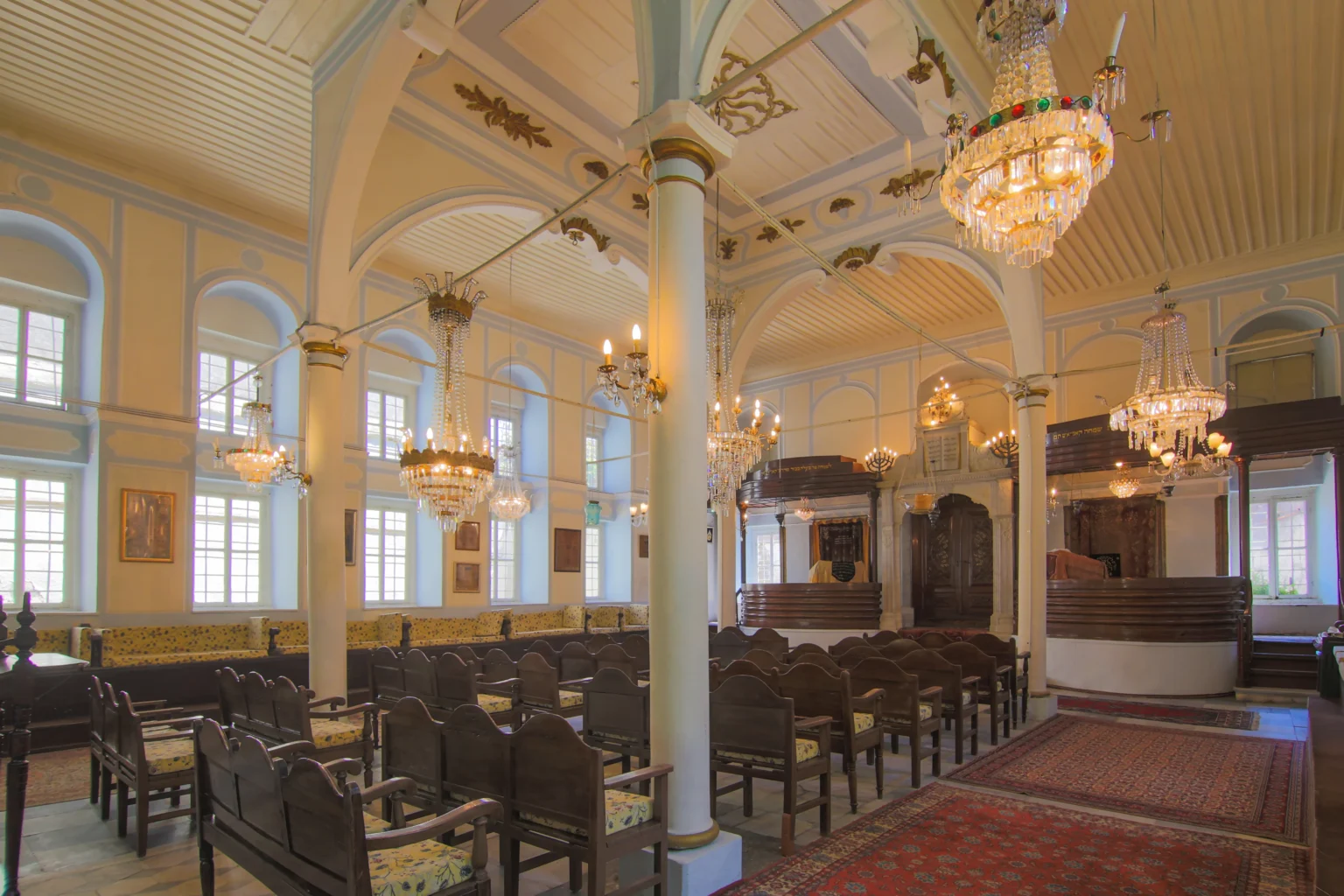
Located in a beautiful garden with citrus and palm trees, Senyora Synagogue dates from 1684. The land on which it stands was donated by a lady named Leah, therefore the synagogue was colloquially called “Senyora Gveret” (Gveret being a Hebrew word used to formally address a female elder). Although the synagogue’s tevah initially was built in the center of the sanctuary in the traditional Sephardic way, it eventually got moved to the front. This created new forms of spiritual interaction and addressing the congregation.
All photos courtesy of Nesim Bencoya
For more information, contact the Izmir Jewish Heritage Project office at: [email protected]

